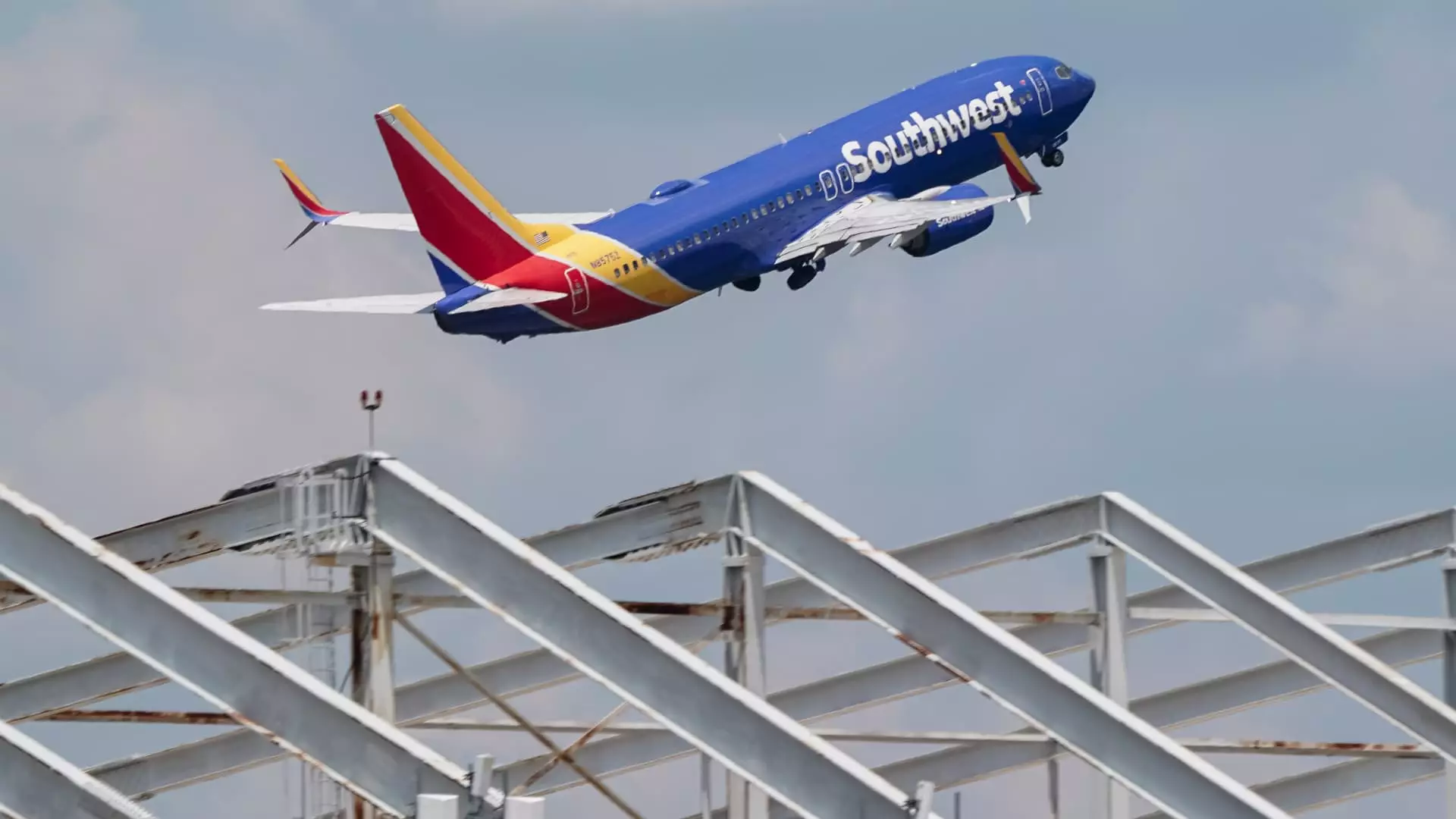Southwest Airlines recently unveiled its financial results for the third quarter, revealing a decrease in profit compared to the previous year. Although the dip in net income signifies potential challenges, the airline’s performance exceeded Wall Street expectations, highlighting a complex narrative unfolding in the aviation sector. With net income reported at $67 million, a striking 65% reduction from the same period last year, it appears that the carrier is navigating through turbulent economic skies. Interestingly, adjusted earnings per share (EPS) rose to 15 cents, surpassing the projected figures of zero cents.
Despite the decline in profit, Southwest’s revenue increased to $6.87 billion, marking over a 5% rise from the previous year and exceeding the anticipated $6.74 billion. The airline’s forecast for the upcoming fourth quarter indicates an optimistic outlook, predicting a unit revenue growth of 3.5% to 5.5%, although this comes in light of a 4% reduction in overall capacity when compared to the previous year. In a strategic move, the company is also bracing for a projected cost increase, excluding fuel, which could rise as much as 13%. This balance between maintaining revenue growth while managing escalating costs will be a critical puzzle that the airline management must solve.
One of the notable developments in recent weeks has been Southwest’s deal with activist investor Elliott Investment Management. This agreement has not only averted a potentially contentious proxy fight but also ushers in an era of shared governance with the addition of six board members proposed by Elliott. The deal solidifies the position of Southwest CEO Bob Jordan, ensuring his leadership as the airline navigates these challenging times. This cooperative approach with an activist investor reflects a broader trend in corporate governance, where companies are forging alliances with influential investors to bolster strategic direction.
In an ambitious blueprint, Southwest Airlines has laid out a three-year plan aimed at enhancing its earnings before interest and taxes by $4 billion by the year 2027. Central to this plan is a substantial $2.5 billion share buyback program, with an immediate allocation of $250 million aimed at stabilizing stock prices. Moreover, the airline is preparing to implement significant operational changes, such as moving away from its iconic open seating policy to a new model that introduces seat charges and additional legroom options at premium rates. These changes signal a marked transformation within the airline, reflecting industry trends toward maximizing both customer choice and revenue.
In its earnings release, Southwest noted robust travel demand, suggesting that consumer confidence in leisure travel remains resilient. This sentiment aligns with reports from other airlines indicating solid bookings as the holiday season approaches, even as they streamline capacity to address unprofitable routes. The airline industry’s ability to adapt to changing market dynamics while meeting consumer expectations may dictate future trajectories for carriers like Southwest.
While Southwest Airlines faces financial headwinds, its strategic maneuvers, ongoing revenue growth, and proactive management can potentially set the stage for a more stabilized future in an ever-evolving aviation landscape.


Leave a Reply